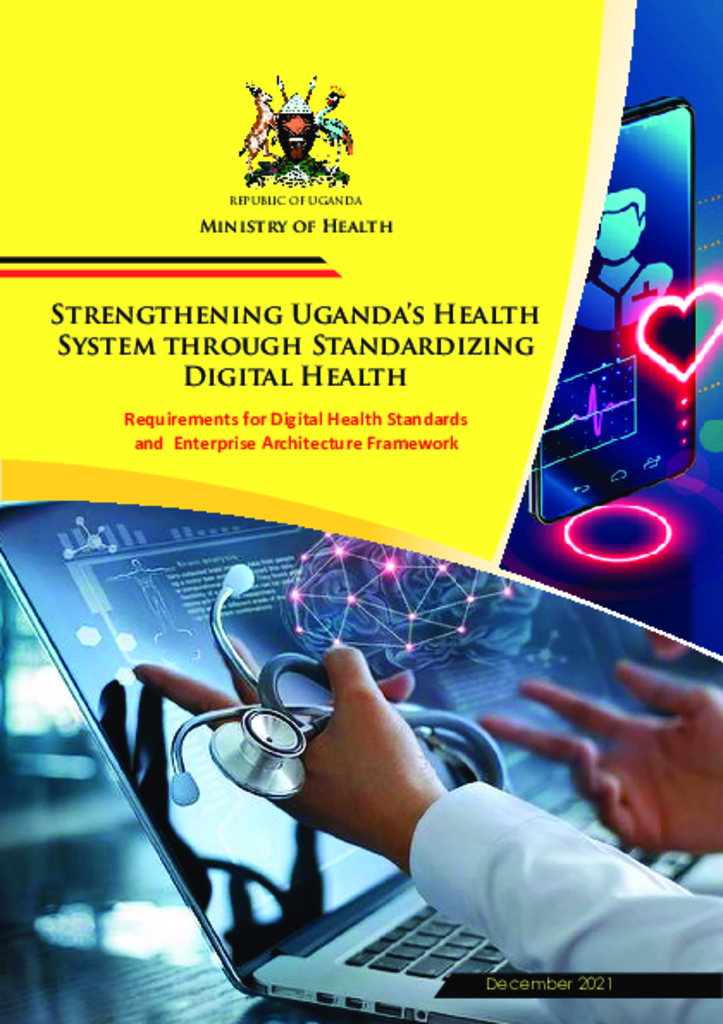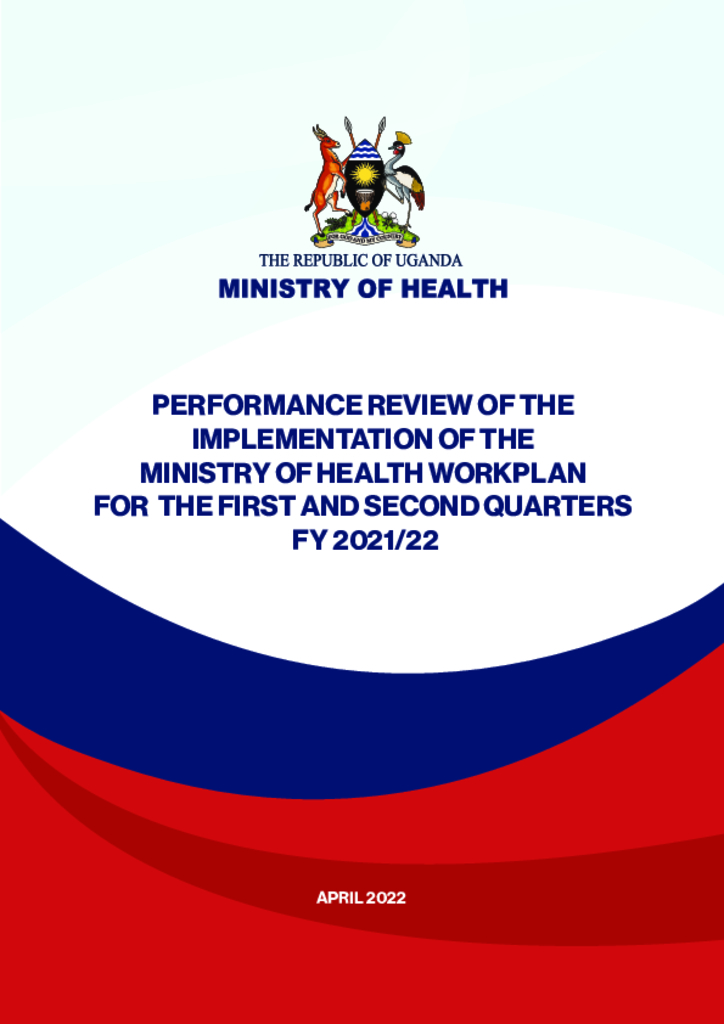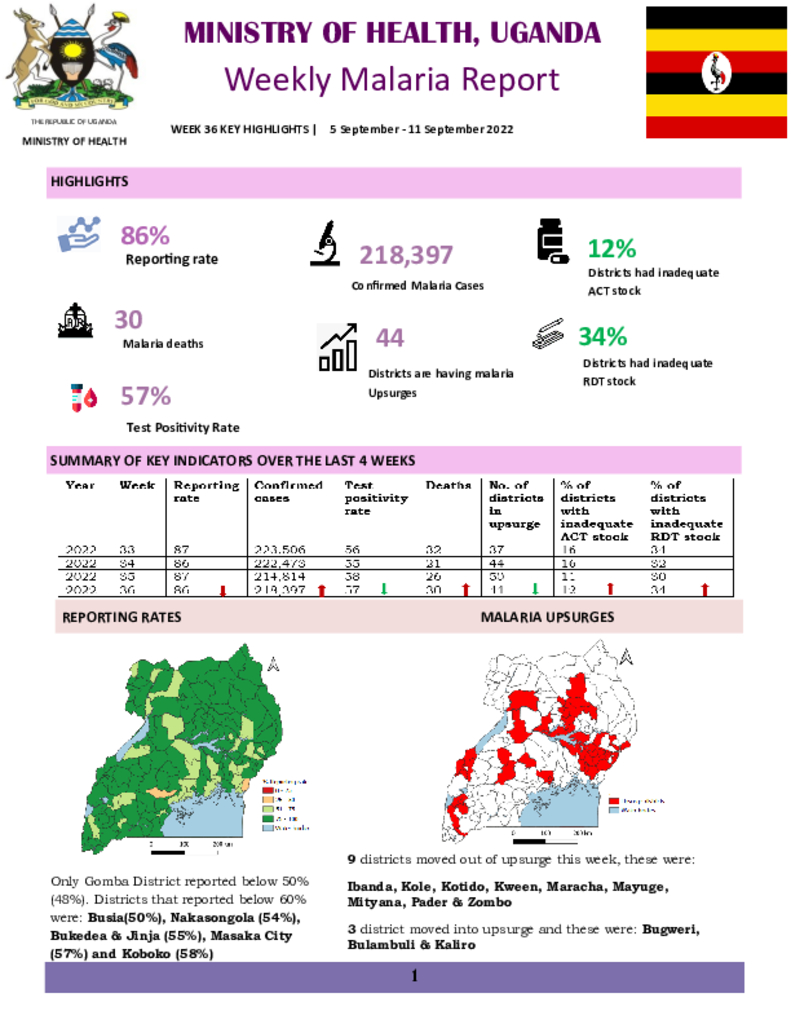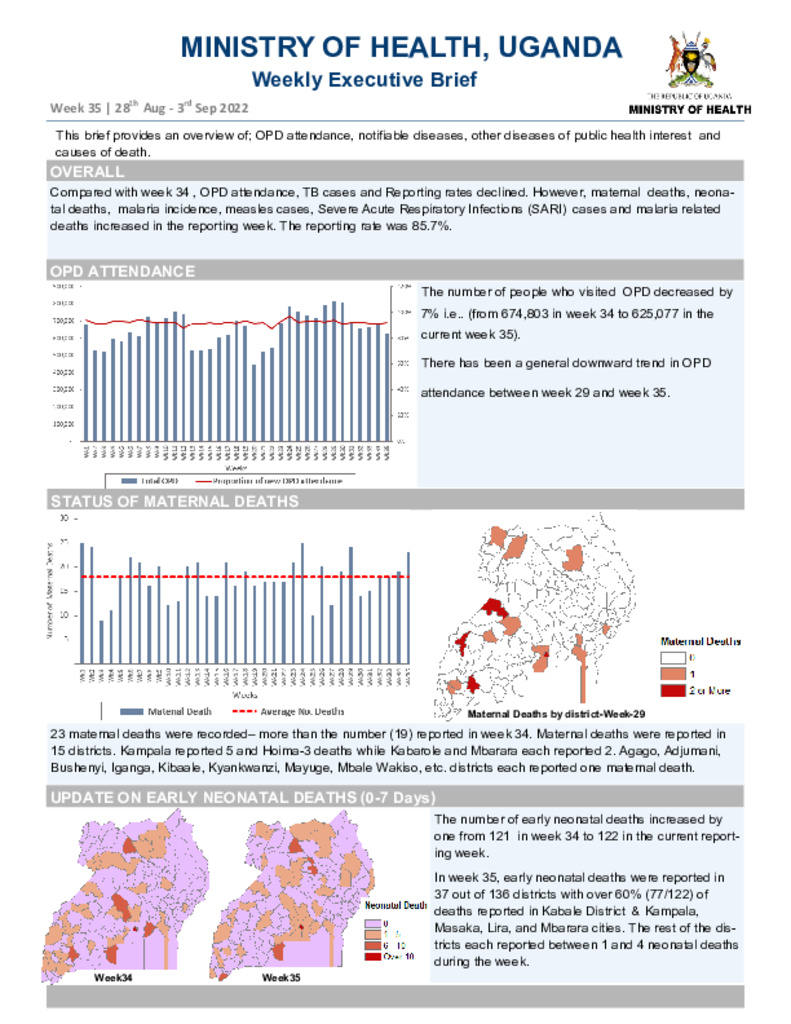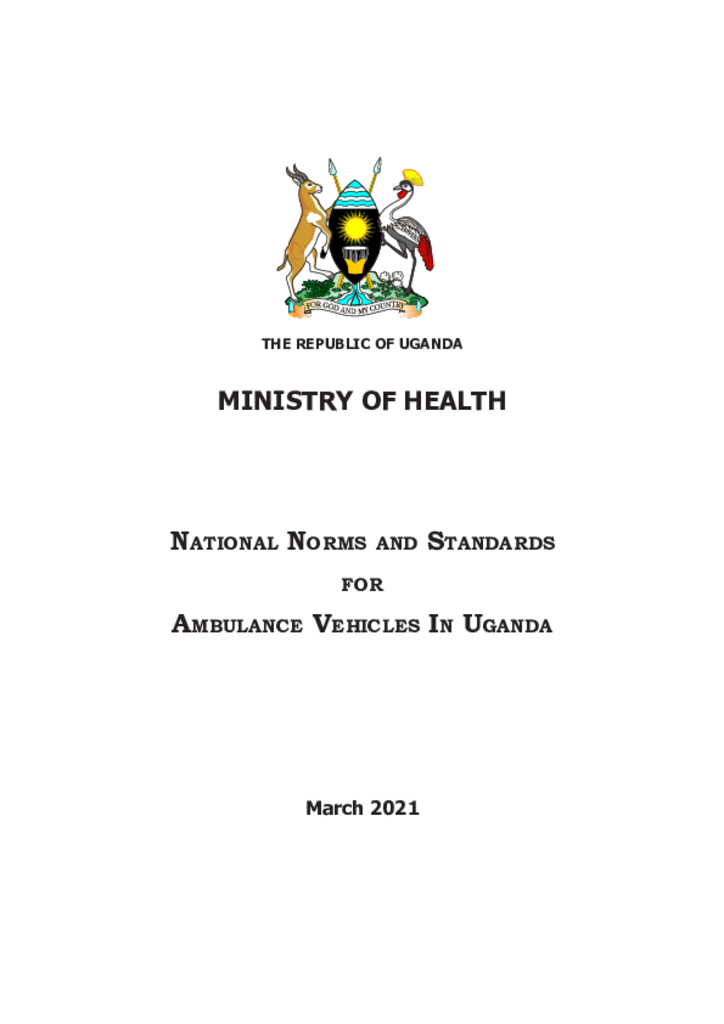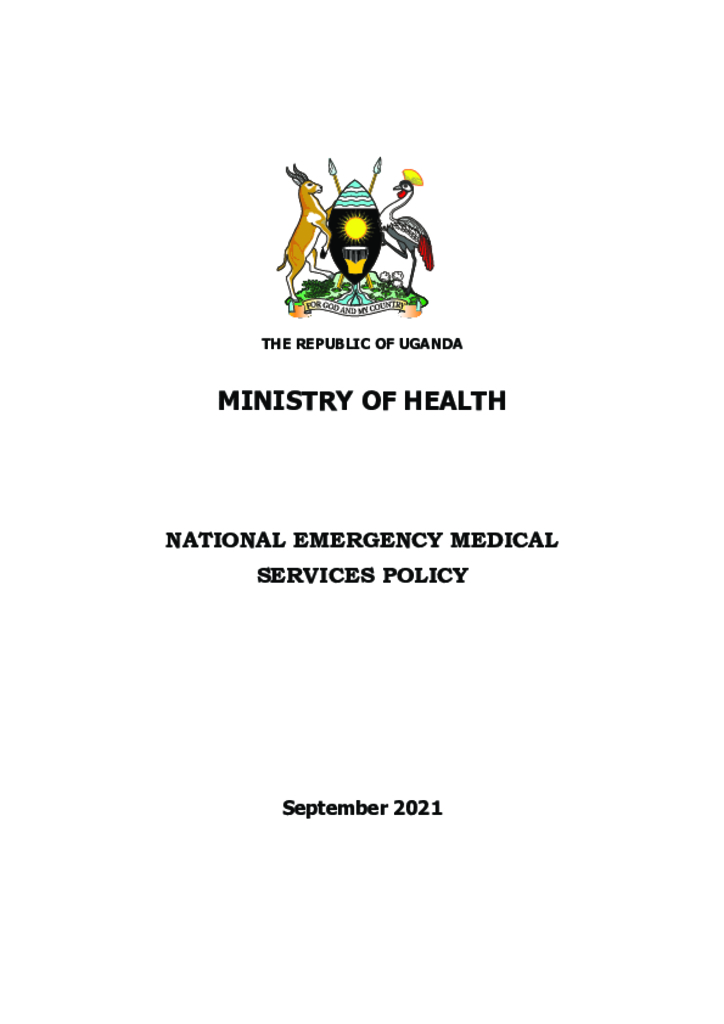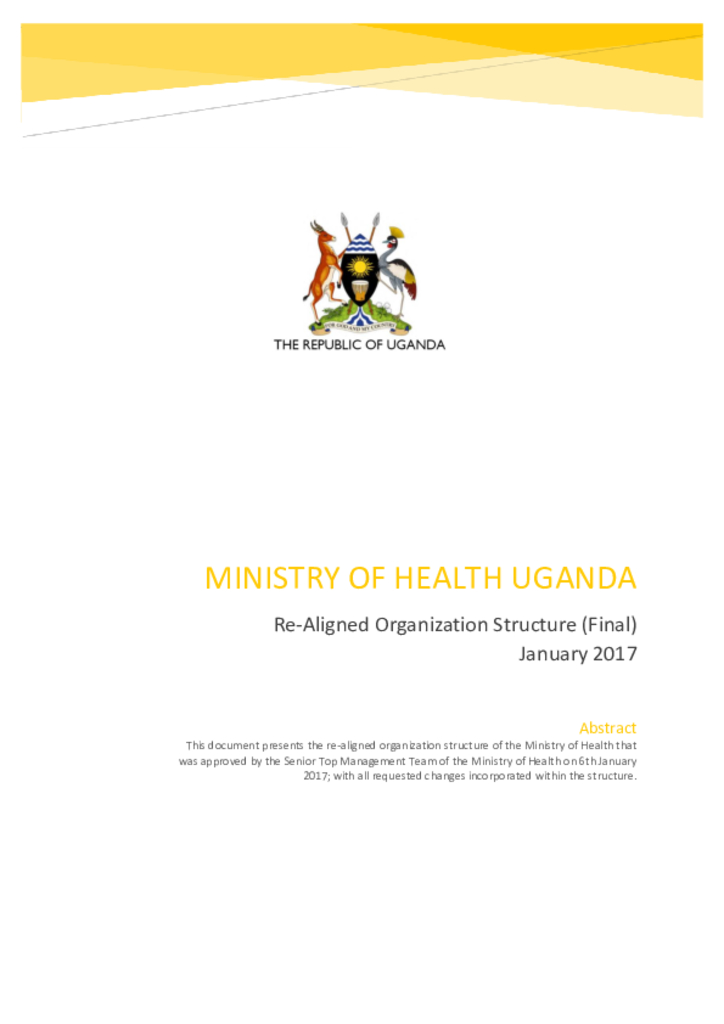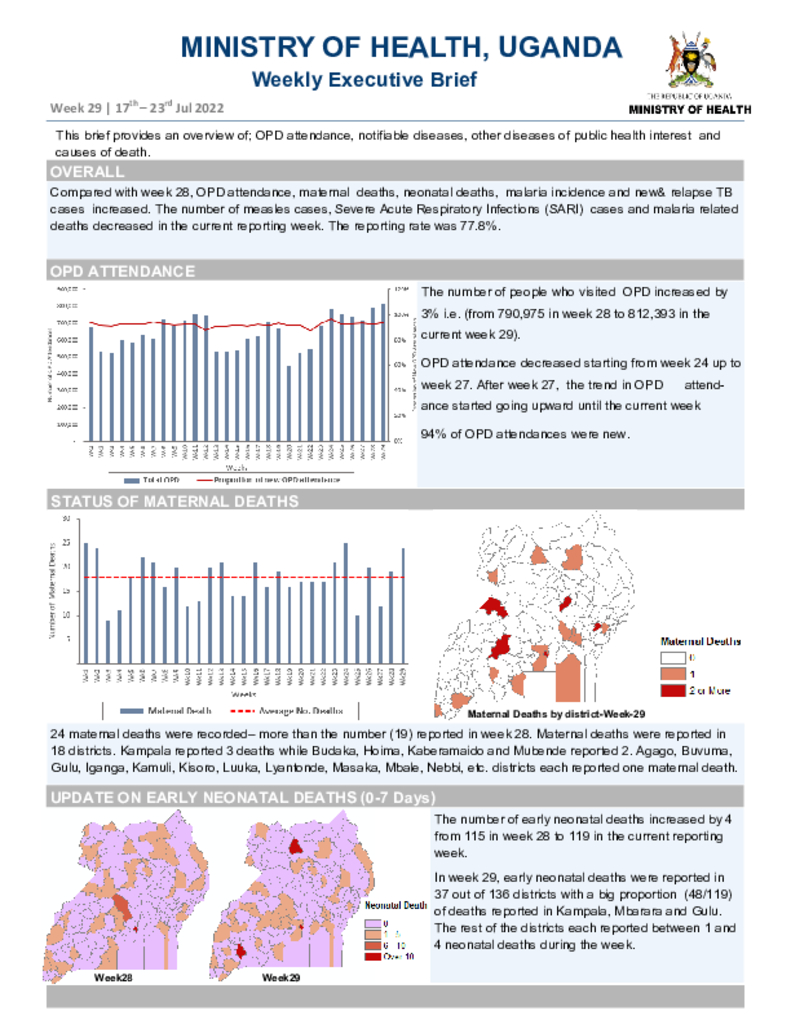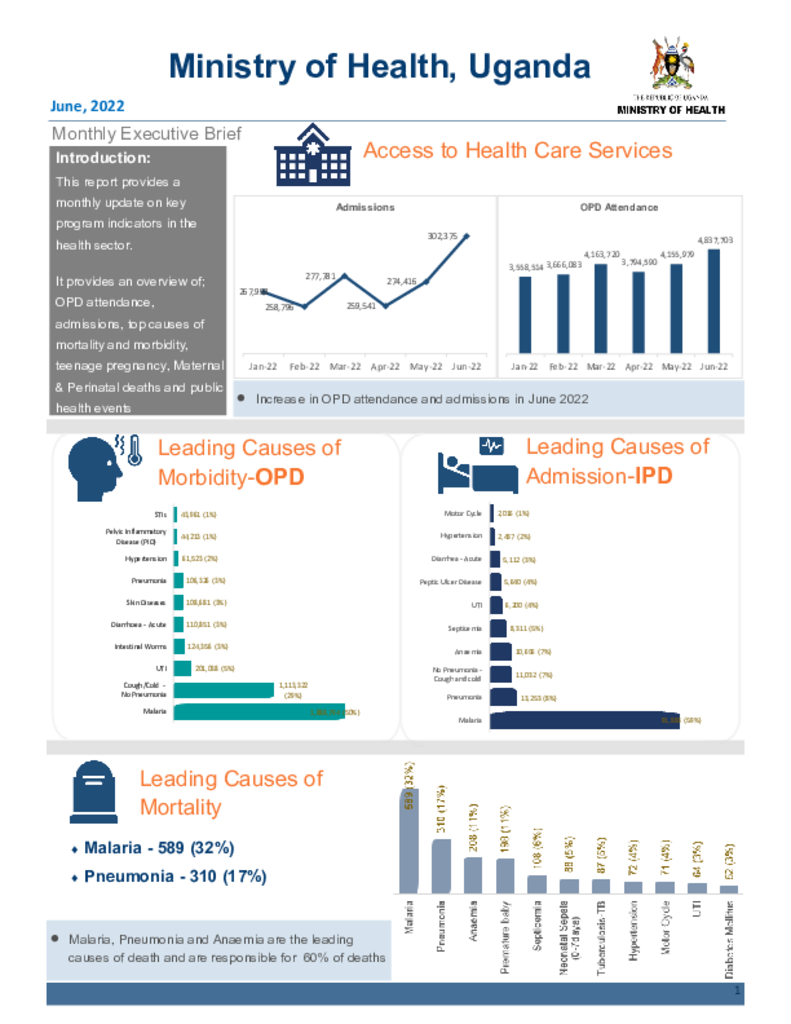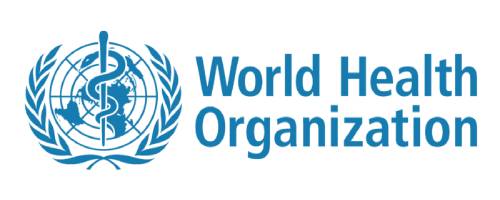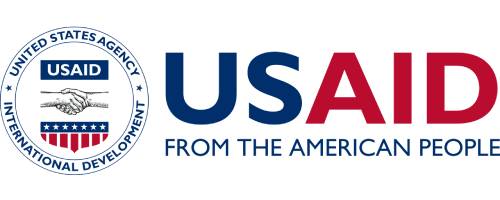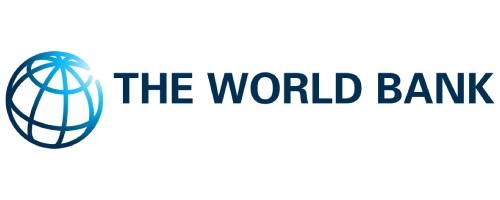This report provides a monthly update on key program indicators in the health sector. It provides an overview of; OPD attendance, admissions, top causes of mortality and morbidity, teenage pregnancy, Maternal & Perinatal deaths and public health events
This handbook provides a set of requirements for the digital health standards and enterprise architecture framework for Uganda’s Health System. To derive these requirements, an exploratory study on the landscape for digital health in Uganda’s Health System was conducted to understand the challenges that impeded digital health standardization and data use for action when managing HIV/AIDS and Tuberculosis (TB) diseases electronic health information systems.
The Semi-Annual Health Sector Performance review meetings highlight progress, challenges, lessons learnt and proposes a mechanism for improvement. The meeting focuses on the progress in the implementation of approved work plans and Budgets for FY 2021/22 and trends in performance for selected indicators.
These work plans include Departments, Programmes, Councils and National Level Institutions all of which are mandated to present their achievements cumulatively for two Quarters.
For week 36, we have seen a one percentage point reduction in the test positivity rate (from 58% to 57% this week) and the number of districts in upsurge has reduced from 50 to 44 this week. Despite this decline, we saw an increase across all other indicators: confirmed cases, deaths, and the percentage of districts with an inadequate stock of ACTs and RDTs. Continuous efforts from all stakeholders are needed to respond to the current malaria situation in the country.
This brief provides an overview of; OPD attendance, notifiable diseases, other diseases of public health interest and
causes of death.
This book of ambulance norms and standards shall be used in guiding the key stakeholders in procurement and use of ambulance vehicles. The Ambulance Norms and Standards shall be given a status of National Standard by the gazette of a Statutory instrument. The document has been prepared under the mandate of the department of emergency medical services and in fulfillment of the Ministry of Health responsibility on providing health Standards and health service delivery standards. These norms and Standards cover the Road Ambulance vehicles and the Boat ambulance Vehicles and the aeromedical ambulances that will be added in the next review.
This Emergency Medical Services (EMS) Strategic plan operationalises the National Emergency Medical Services (EMS) Policy 2019, The National Policy for Disaster Preparedness & Management 2010 and the National Road Safety Policy 2017. It defines the EMS administration and service delivery system at all levels of health care in the country covering obstetric, medical, surgical, paediatric, mental and trauma emergencies as well as medical care during disasters. The priority actions are aimed at fulfilling the Health Sector challenges and global commitments on emergency care system
The development of this National Emergency Medical Services Policy comes in response to the public outcry over limited response to emergencies right from the scene of an emergency (home, school, work or location) to accident and emergency units in health facilities, non-functional ambulances, and lack of coordination of the various stakeholders. The Health Sector Development plan (HSDP) 2016/17-2020/21, H.E. the President’s Strategic Directives to the Health Sector and the NRM Government Manifesto 2016- 2021 spell out the establishment of a functional ambulance and referral system as one of the key deliverables by 2021.
The final draft re-aligned structure of the Ministry was presented to the Senior Top Management Team and members of the Senior Management Team on 6th January 2017, and the final draft re-aligned structure was approved with changes. The structure was finalized based on final changes from the Senior Top Management Team, and the Approved Final Structure is presented in the subsequent pages...
This brief provides an overview of; OPD attendance, notifiable diseases, other diseases of public health interest and causes of death.
This report provides a monthly update on key program indicators in the health sector.
This brief provides an overview of; OPD attendance, notifiable diseases, other diseases of public health interest and causes of death.

